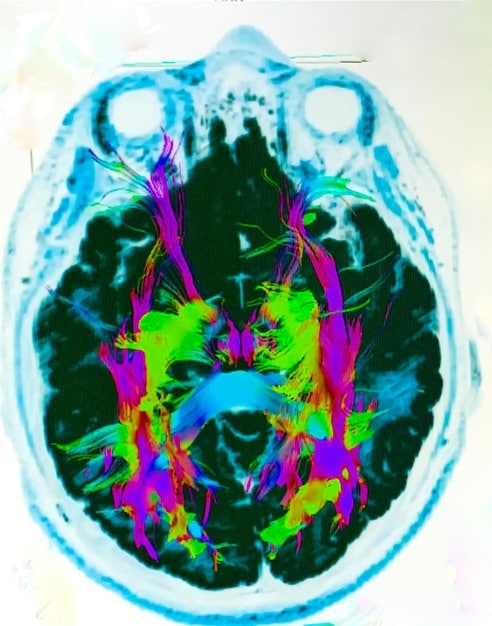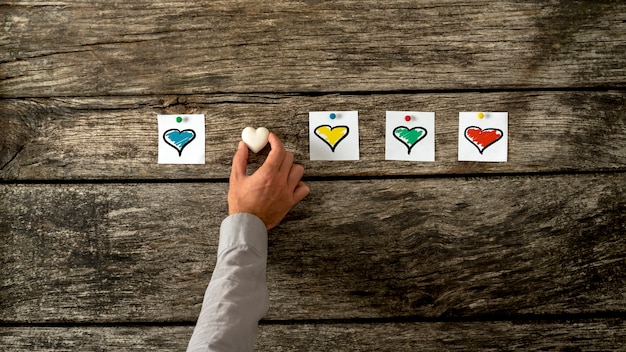Pay It Forward: Sparking a Chain Reaction of Kindness

Pay it forward is a concept where receiving a kindness inspires you to pass it on to others, creating a ripple effect that can transform communities and foster generosity. This article explores how a single act of kindness can inspire ten others in just one week, highlighting the power of positive actions.
Imagine a world where every good deed inspires ten more. The pay it forward movement is a system of generating goodwill through one’s actions. It’s not just a nice idea; it’s a powerful social phenomenon that can amplify the positive impact of individual acts of kindness.
Understanding the Pay It Forward Concept
The pay it forward concept is simple yet profound: instead of paying back a kindness received, you extend that kindness to someone else. This creates a chain reaction, where each act inspires another, potentially reaching a vast number of people.
The Essence of Paying It Forward
At its core, paying it forward involves a shift in mindset. It’s about recognizing the potential of your actions to influence others positively and consciously choosing to spread kindness rather than simply receiving it.
Where Did It Originate?
While the concept seems modern, paying it forward has roots in philosophical ideas dating back centuries. However, it gained widespread popularity through Catherine Ryan Hyde’s 1999 novel, “Pay It Forward,” which was later adapted into a film.
- The novel tells the story of a young boy who starts a “pay it forward” movement as a social studies project.
- Each person who receives a kindness must “pay it forward” to three other people.
- This exponential growth illustrates the transformative potential of small acts of generosity.
The concept challenges individuals to think beyond immediate reciprocity and consider the broader impact of their actions, fostering a culture of proactive kindness and empathy.
The Science Behind Kindness and its Ripple Effect
Kindness not only benefits the recipient but also the giver. Studies show that performing acts of kindness releases endorphins, leading to increased feelings of happiness and well-being. This positive reinforcement makes people more likely to continue engaging in kind acts.

Neurological Benefits of Kindness
Research indicates that kindness activates the brain’s reward centers, similar to what happens when we experience pleasure. This biological response encourages us to repeat these behaviors.
Social Contagion of Kindness
Kindness is contagious. When people witness acts of generosity, they are more likely to emulate that behavior. This social contagion effect amplifies the reach of individual acts of kindness, creating a positive feedback loop within communities.
- Witnessing kindness can inspire feelings of hope and optimism.
- These positive emotions motivate individuals to take action and contribute to the well-being of others.
- The more visible and celebrated acts of kindness are, the stronger the ripple effect becomes.
Understanding the science behind kindness underscores its importance in promoting both individual and collective well-being. By recognizing the benefits and mechanisms of kindness, individuals are more likely to engage in and sustain acts of generosity.
How One Act of Kindness Can Inspire Ten Others
Let’s explore how a single act of kindness can inspire a chain reaction that reaches ten other people within a week. This scenario illustrates the power of compounding positive actions.
Scenario: The Initial Act
Imagine someone pays for the coffee of the person behind them in line at a coffee shop. This simple act is the first domino falling.
Days 1-3: The First Wave
The recipient, moved by the gesture, decides to help an elderly neighbor carry groceries. The neighbor, in turn, offers to babysit for a single parent, allowing them to attend a job interview.
These three acts are a direct result of the initial kindness, each building upon the last and spreading positivity outward.
Days 4-7: The Second Wave
The single parent, now employed, volunteers at a local homeless shelter. A volunteer at the shelter organizes a community cleanup event. A participant in the cleanup event donates blood at a blood drive. Another blood donor offers to mentor a student struggling in school.

These subsequent acts continue the chain. The tenth person, inspired by the mentor, starts a small community garden for underprivileged families.
This example highlights how a small, initial act of kindness can transform into a series of impactful contributions to the community, creating a week filled with compassion and support.
Examples of Simple Pay It Forward Actions
Many simple actions can spark a pay it forward chain. The key is to be mindful of opportunities to extend kindness to others, no matter how small the gesture.
Everyday Acts of Kindness
Here are some simple ways to pay it forward in daily life:
Practical Ways to Implement Pay It Forward
You don’t need grand gestures to make a difference. Small, thoughtful acts can have a significant impact.
- Pay for someone’s meal or coffee.
- Offer to help a neighbor with yard work.
- Donate gently used clothing or household items to a local charity.
- Write a thank-you note to someone who has made a difference in your life.
Community-Based Initiatives
Expand the concept to larger initiatives by organizing community events or projects that promote kindness and support.
These examples showcase the range of possibilities for paying it forward, from individual acts of kindness to community-wide initiatives. The potential for impact is vast, limited only by imagination and willingness to act.
Overcoming Challenges in Paying It Forward
While the concept of paying it forward is straightforward, there can be challenges in implementing it consistently. Recognizing these challenges and developing strategies to overcome them is crucial for sustaining a culture of kindness.
Apathy and Skepticism
Some people may be apathetic or skeptical about the idea of paying it forward, questioning its effectiveness or feeling that it’s too idealistic.
Resource Constraints
Limited resources, such as time, money, or energy, can make it difficult for people to engage in acts of kindness, especially when they are already struggling with their own challenges.
Sustaining the Momentum
Maintaining the momentum of a pay it forward initiative can be challenging over time. Initial enthusiasm may wane, and people may lose sight of the importance of continuing the chain of kindness.
- Promote stories of successful pay it forward initiatives to demonstrate the positive impact of kindness.
- Encourage small, sustainable actions that can be easily incorporated into daily routines.
- Celebrate milestones and achievements to reinforce the value of the initiative and keep participants motivated.
Addressing these challenges requires a combination of education, encouragement, and practical support. By fostering a culture of kindness and providing resources to help people act generously, we can create a more compassionate and supportive society.
Measuring the Impact of Pay It Forward Initiatives
Measuring the impact of pay it forward initiatives can provide valuable insights into their effectiveness and help refine strategies for maximizing their reach and influence. While it may be difficult to quantify the exact number of people affected, various metrics can be used to assess the overall impact.
Qualitative Measures
Gathering stories and testimonials from people who have been involved in pay it forward initiatives can provide rich qualitative data about the impact of these actions.
Quantitative Measures
Tracking the number of acts of kindness, the amount of money or resources donated, or the number of volunteers involved can provide quantitative data about the reach and scale of a pay it forward initiative.
These assessments can provide valuable insights into the reach and effectiveness of pay it forward initiatives, allowing organizers to refine their strategies and maximize their positive impact.
| Key Concept | Brief Description |
|---|---|
| 😊 Paying It Forward | Responding to a kindness by doing good for someone else. |
| 🧠 Endorphin Release | Kindness boosts endorphins, enhancing well-being. |
| 🤝 Social Contagion | Witnessing kindness inspires similar actions. |
| 🌱 Community Growth | Small acts yield significant community impact. |
Frequently Asked Questions About Pay It Forward
▼
Paying it forward means that when someone does something kind for you, instead of paying them back directly, you do something kind for someone else, creating a cycle of kindness.
▼
It’s important because it fosters a culture of generosity and goodwill, spreading positivity and making communities more compassionate and supportive. It also multiplies the impact of single acts.
▼
Yes, they absolutely can. Small acts can have a ripple effect, inspiring others to act kindly and creating a larger impact than one might initially expect. These acts collectively enhance community spirit.
▼
Start by performing small acts of kindness yourself, and encourage others to do the same. Share your experiences to inspire others. This helps create a local movement that continues to grow.
▼
Challenges include maintaining enthusiasm, ensuring consistent participation, and overcoming skepticism. Regular motivation and showcasing success stories can help sustain the movement and counteract negativity.
Conclusion
The pay it forward movement offers a powerful framework for fostering kindness and sparking positive change. By understanding the science behind kindness, implementing simple actions, and measuring the impact of initiatives, individuals and communities can create a world where generosity becomes the norm, and single acts of kindness inspire countless others.





